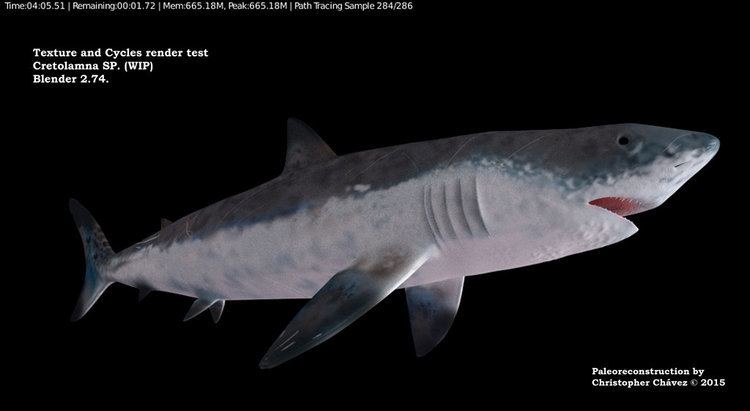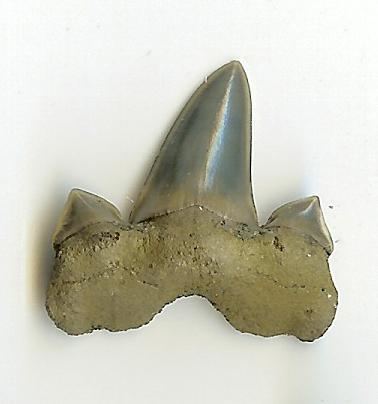Kingdom Animalia Scientific name Cretolamna Higher classification Otodontidae Order Lamniformes | Superorder Selachimorpha Phylum Chordata Rank Genus Subclass Elasmobranchii | |
 | ||
Family †Cretoxyrhinidae or †Otodontidae Similar Shark, Squalicorax, Otodus, Lamniformes, Cretoxyrhina mantelli | ||
Cretolamna is a genus of extinct mackerel shark that belonged to either the family Cretoxyrhinidae or Otodontidae.
Contents
These sharks lived from the Barremian of the Cretaceous period to the Mid Miocene epoch, approximately from 130.0 to 13.65 million years ago. It is considered by many to be the ancestor of many of the famous shark genera, such as the mako, great white, Angustidens, and Megalodon sharks.

Etymology

The genus name Cretolamna means Cretaceous Lamna, as the first specimens of these Lamniformes sharks have been found in Cretaceous aged sediments.
Size estimation

The fossils of Cretolamna are of teeth and a few scattered vertebrae. Most teeth average about 1 to 2 cm (about .5 to .75 in) long. They are broad with small cusps at the base of the main crown.

Most estimates put the shark's length at about 2–3 m (6.6–9.8 ft) long with the largest specimens being about 3.6 m (12 ft) in length.
Distribution

This shark genus is one of the most successful, as it is widely distributed throughout time and all over the world. Cretolamna was a widespread genus in North Africa (Morocco) and North America on the East Coast and in the Midwest. Deposits in Morocco are usually Eocene in age, while most deposits in the U.S. are of Cretaceous and Paleocene age. C. maroccana is more prevalent in Morocco, while C. appendiculata is more prevalent in the United States. Both species overlapped at one point in time.
Diet

Cretolamna was a predator and preyed upon large bony fish, turtles, mosasaurs, squids, and other sharks. It was a medium-sized predatory shark.
Evolution
Cretolamna is believed to have evolved into the genus Otodus sometime in the Paleocene. Otodus is believed to have evolved later into the Carcharocles genus. Others believe that Cretolamna evolved into the Paleocene shark Palaeocarcharodon, which some think evolved into Carcharodon carcharias.
